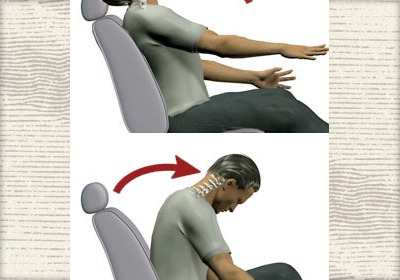Euro NCAP gets tough on whiplash
Sun, 30 Nov 2008[ad#ad-1]
As we reported a few days ago, the Renault Megane succeeded in achieving the joint highest ever score in the Euro NCAP tests. But as we noted then, this was the last bunch of NCAP tests under the existing regulations, and all changes from the New Year.
As an introduction to the new tests, NCAP has just released test figures for whiplash testing on a group of 25 cars recently tested, and the results are rather enlightening.
The new whiplash tests will get a Green for Good (meaning long-term injuries reduced by up to 40%), Yellow for Marginal (can do better) and Red for Poor (oh, dear – time to spend money on the seats). Of the 25 just tested, only five passed with a Green. But more surprisingly, three of the bottom five cars – The Ford Kuga, the Peugeot 308CC and the Citroen C5 – got a Red. And all three of these car currently boast an NCAP 5 Star rating. When these results are incorporated fully in to the tests in February, that would mean a drop to 4 Stars for these cars.
Whiplash - the biggest personal injury claim in the EU
Whiplash is the biggest insurance payout claim in the EU, costing insurers billions of pounds a year. Now there is no doubt that a chunk of this is from dodgy claims, because whiplash is pretty easy to fake – at least the minor sort – and at small size claims it is probably easier for insurance companies to throw a few bob at the problem to make it go away. But at the serious end, whiplash can cause permanent injury and brain damage, so anything that can be done to improve the current situation is good for the driving public and the insurance companies.
Not surprisingly, Volvo did pretty well in the tests, coming top of the list of those cars tested. They have been employing active whiplash protection across their range for almost a decade, and are an example of where other manufacturers need to follow.
But part of the problem, apart from poor design, is badly adjusted headrests. And that is down, in part, to the driver. But it can be difficult if you’re tall. I’m 6’3″, with a body the length of a 7′ man (and legs the length of a 5′ man!) so any car I sit in is almost always short on headroom. They say the headrest should be adjusted so it is as close to the back of the head as possible, and with the top of the headrests at least as high as the top of the skull. Well I’m sorry, but unless the headrest comes down from the roof of the car, I will never be able to achieve that.
Now where have I put that whiplash claim form……?!
By Cars UK

